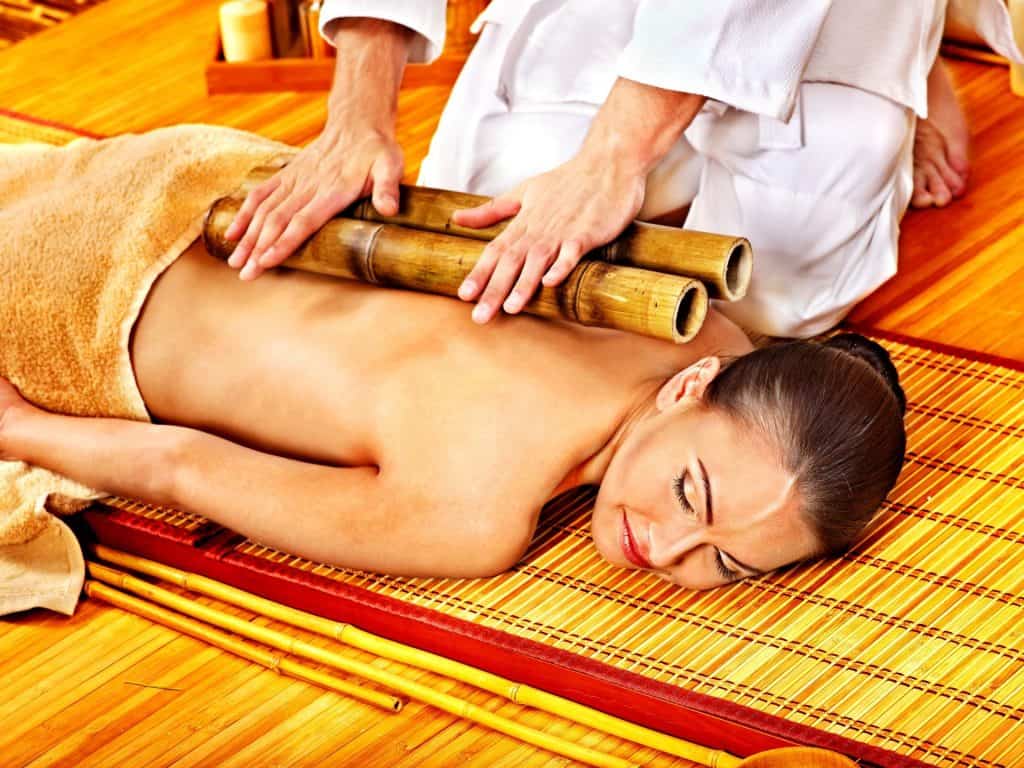

A majority of massage therapists rely on their own body for the tools used in a massage session. In general, massage practitioners administer a treatment with their hands, thumbs, knuckles, forearms, elbows and sometimes feet. Some therapists might give their appendages a rest by utilizing a tool made of plastic or wood for certain applications. Three specialized massage tools from different areas of the world might surprise many familiar only with the more common styles of massage therapy.
Although not the only styles of bodywork that treat clients with a signature apparatus, three types of massage therapy found around the globe that utilize unusual equipment are Creole bamboo massage, Chinese knife massage and Russian venik massage.
Creole Bamboo Massage
Creole massage originated on the southern shores of the Indian Ocean from the islands in the Mascarene Archipelago. Creole massage is performed with two hollow bamboo sticks; one is completely hollow and the other is half-filled with grains. Accompanied by rhythmic Creole music, the practitioner uses these bamboo sticks for tapotement on the client in rhythm at 120 to 140 beats per minute. This special massage is extremely stimulating, and is advised for those who are overweight or obese, for diminishing cellulite and improving mental and physical fatigue.
Chinese Knife Massage
Based on a 2,000 year old Buddhist tradition, Chinese knife massages are now available in China, Taiwan and Japan – and some Western cities’ Chinatowns. Knife massage is administered according to the meridian theory of Traditional Chinese Medicine, with the intention that the knives stimulate energy (qi) along a person’s meridians by clearing up congestion. During a knife massage, the client lies in a prone position or leans forward in a sitting position with a thin cloth covering the back. The therapist taps the sharp edge of the knife’s blade along the back’s energetic pathways.
Using a chopping motion, Chinese knife massage is not as relaxing as other forms of massage but it is known for its ability to relieve back pain. Although the knives are sharp, the skin is not cut in a properly executed knife massage. In China and Taiwan, meat cleavers are the tool of choice; in Japan, therapists use samurai swords.
Russian Venik Massage
Russian banyas (baths) are institutions steeped in tradition, regarded as a way to get rid of illness. The ancient Russian venik massage is also referred to as a platza massage, a technique that is performed in a hot banya and is said to relax the mind, awaken the skin and relieve everyday aches and pains by:
- improving blood circulation
- strengthening metabolism
- decreasing the growth of pathogens on the skin
The venik is usually a leafy, fragrant, bundle of birch or oak tree twigs soaked in warm or hot water. The therapist uses the venik in several ways; flutters it over the body, compresses it against the skin, brushes it side to side, slaps and lashes the skin. Besides the physical effect of the venik’s movements, a platza is also therapeutic due to the venik’s aromatherapy effects. The essential oils from a Birch venik act as an expectorant – great for respiratory congestion, muscle and joint pain. The essential oils from an Oak venik benefit oily skin, are relaxing and act as a strong anti-inflammatory.
Bodywork goes beyond the standard styles taught in massage school – a fact evident upon traveling the world. While manual therapies using bamboo sticks, meat cleavers, Samurai swords and bunches of tree twigs may seem strange to those in the Western hemisphere, these massage techniques are time-honored, therapeutic traditions.












Individualized and site specific tools for bodywork keep this alternative therapy pristinely creative. Gentle, harmonious and integrative techniques offered with compassion and intuitive interfacing! All deserve such care!